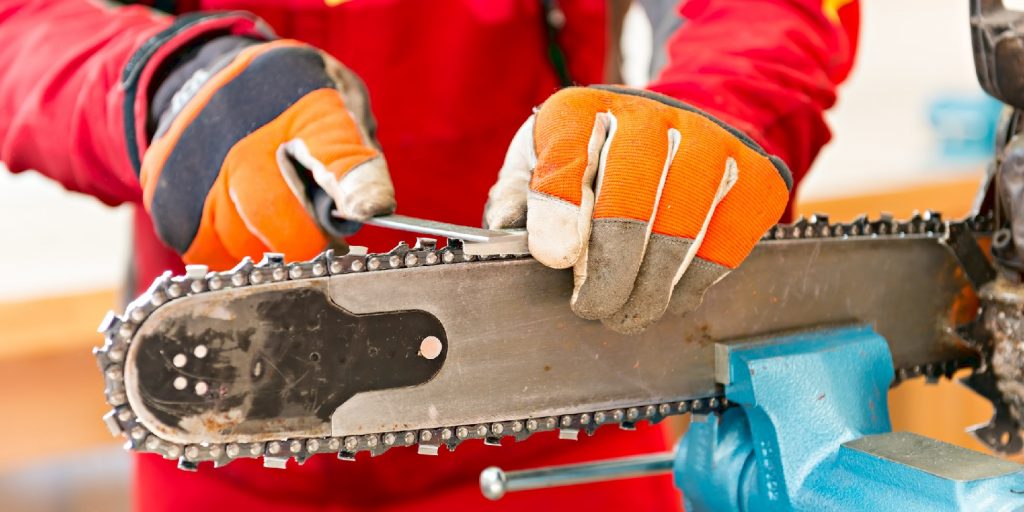Chainsaw Sharpening: A Step-By-Step Guide

Maintaining a sharp chainsaw is crucial for efficient and safe cutting. The cutting teeth of a chainsaw blade can become dull over time, reducing its cutting performance and posing a safety risk. Chainsaw sharpening is a skill every chainsaw owner should learn to keep their tool in top condition. In this comprehensive guide, we will take you through the step-by-step process of chainsaw sharpening. From gathering the necessary tools to identifying the correct file size, angles, and techniques, you’ll gain the knowledge and confidence to effectively sharpen your chainsaw. Whether you are an experienced outdoorsman or just purchased your first chainsaw, you are in the right place.
Gather the Required Tools
Before you start sharpening your chainsaw, you should gather the necessary tools. You will need a chainsaw sharpener or round file, a file guide or holder, a depth gauge tool, a flat file, a stump vise or chainsaw clamp, and safety gloves and goggles. Remember to use the correct file size for your chainsaw, as different chains have specific file sizes associated with them.
Secure the Chainsaw
Secure your chainsaw in a stump vise or chainsaw clamp so you can safely and effectively sharpen it. This trick will prevent any accidental movement while you work on the blade. Ensure the chainsaw is firmly in place to provide stability during the sharpening process.
Identify the Cutting Teeth
Take a moment to identify the cutting teeth on your chainsaw blade. Chainsaws have both left-hand and right-hand teeth, which alternate along the blade. There are two types of teeth on a chainsaw. The cutting edge is what you will focus on during sharpening, while the depth gauge determines how deep the chain cuts into the wood.
Sharpen the Cutting Teeth
Start sharpening the cutting teeth using the appropriate file size and file guide. Place the file guide over the tooth, ensuring it aligns with the correct filing angle. Apply steady pressure and move the file forward in smooth, even strokes. File each cutting tooth the same number of times to maintain consistency. Repeat the process for the teeth on one side of the chainsaw blade, then rotate the chainsaw to access the teeth on the other side.
Adjust the Depth Gauges
It’s crucial to check and adjust the depth gauges after sharpening the cutting teeth. Using a depth gauge tool, measure the height of each depth gauge. If a depth gauge is higher than recommended, use a flat file to carefully lower it to the appropriate height. Properly adjusted depth gauges ensure the chainsaw cuts at the correct depth and prevents kickback.
Maintain Chain Balance
While sharpening, it’s crucial to maintain the balance of the chainsaw chain. Sharpen each tooth evenly to prevent imbalances that can lead to uneven cutting and potential safety hazards. Keeping the chain appropriately balanced ensures a smooth and controlled cutting experience.
Maintenance
Proper maintenance is essential to keep your chainsaw in optimal condition. After each use, clean the chainsaw thoroughly, removing any debris, sawdust, or sap that may have accumulated. Inspect the chain, guide bar, and sprocket for any signs of wear or damage, and replace any worn-out components. Check the chain tension and adjust it if necessary.
Lubricate the guide bar regularly to minimize friction and extend its lifespan. Inspect the air filter and clean or replace it to maintain proper engine performance. Check the fuel and oil levels and refill them as required, using the recommended fuel and oil mixture specified by the chainsaw manufacturer. By incorporating regular maintenance practices into your chainsaw care routine, you can enhance its longevity, performance, and safety.
Conclusion
Chainsaw sharpening is a fundamental skill for chainsaw owners to ensure optimal cutting performance and safety. With this step-by-step guide, you can confidently sharpen your chainsaw and maintain its cutting efficiency. Remember to gather the necessary tools, secure the chainsaw, identify the cutting teeth, sharpen them with the correct file size and angle, adjust the depth gauges, and maintain chain balance. Regularly sharpening your chainsaw will prolong its lifespan and make your cutting tasks easier and more effective.
